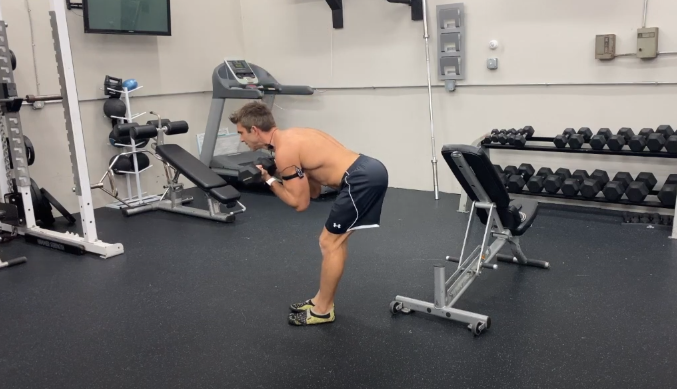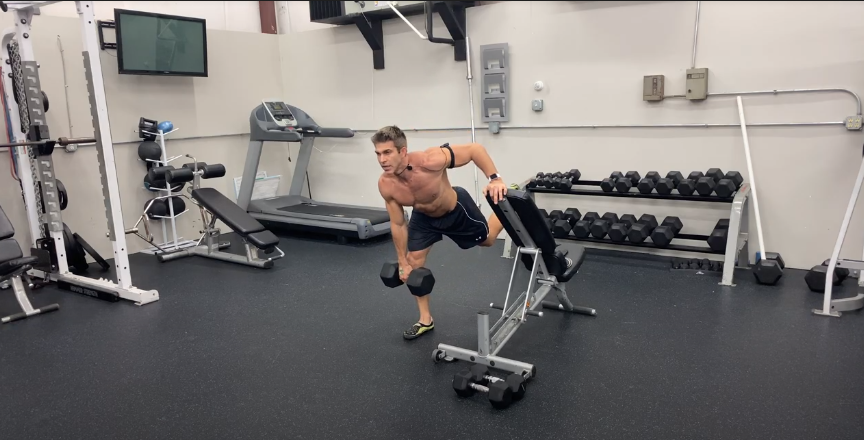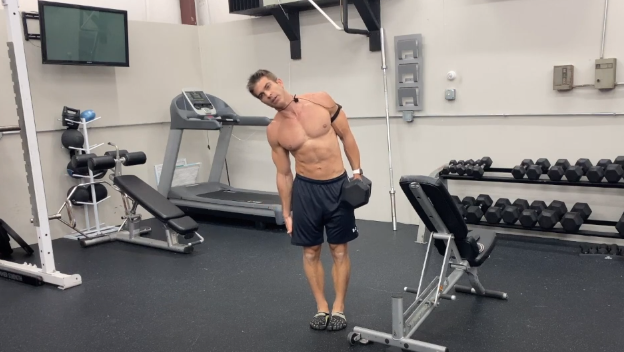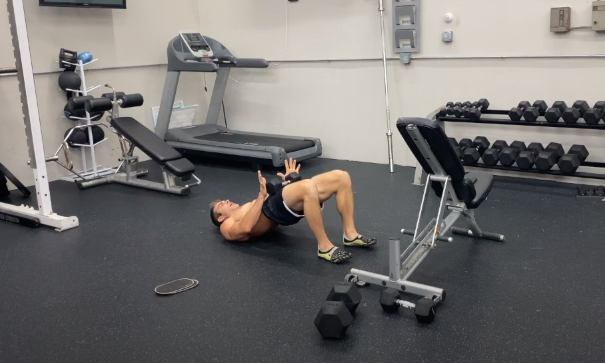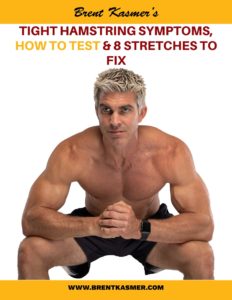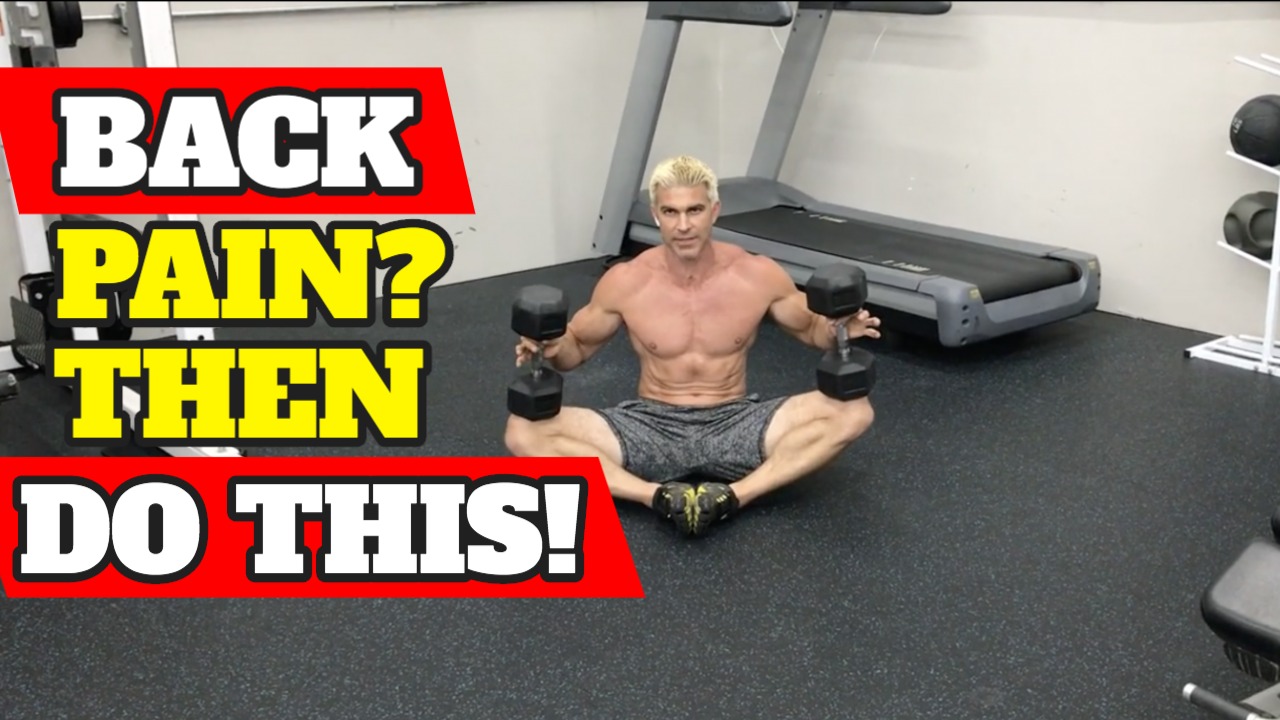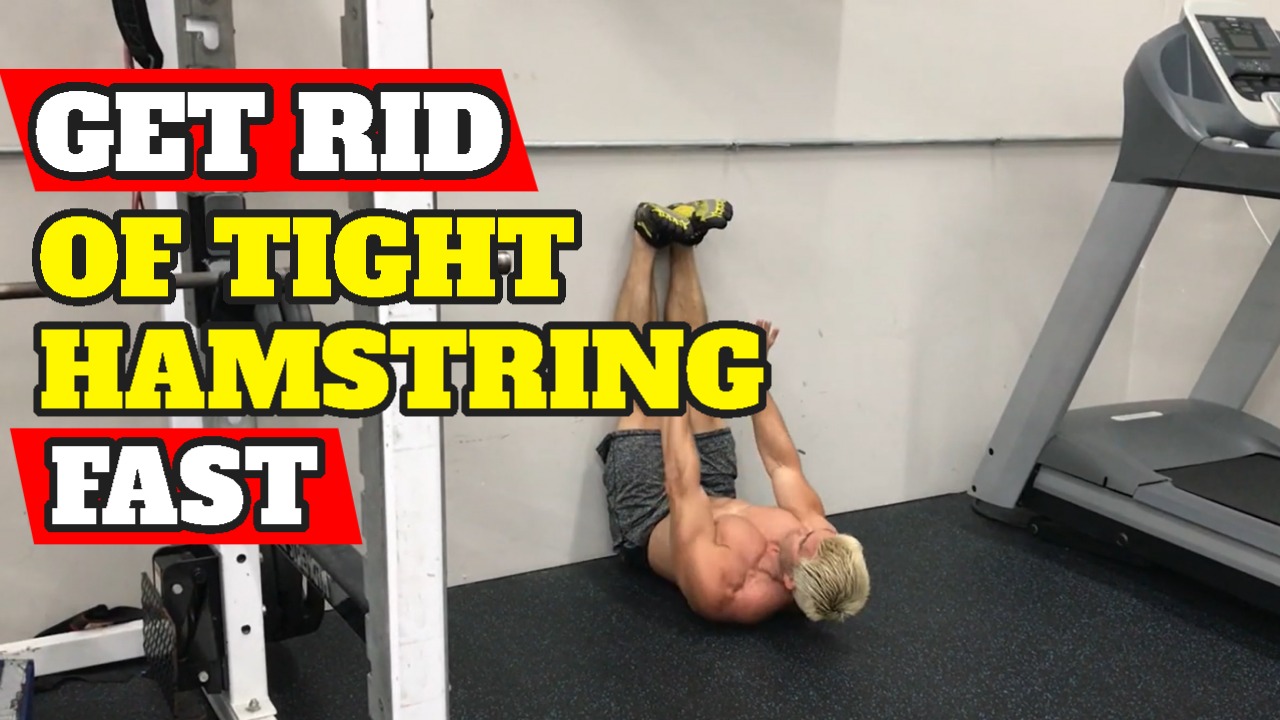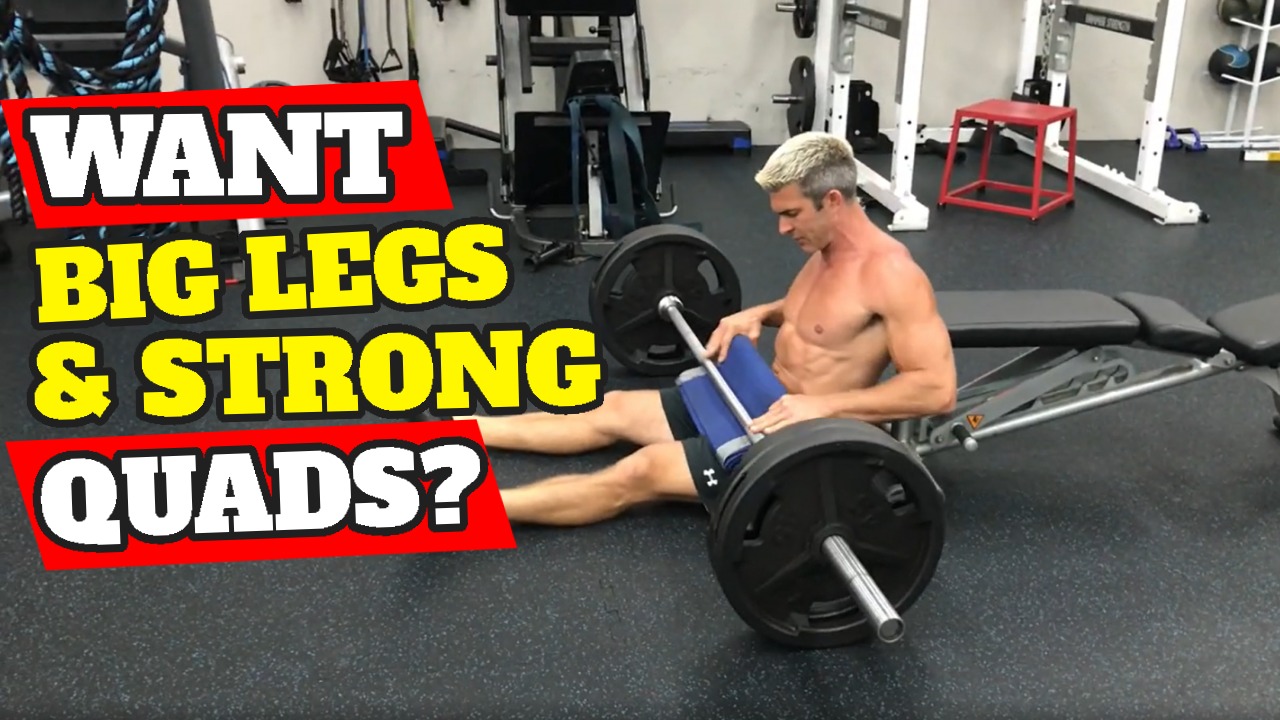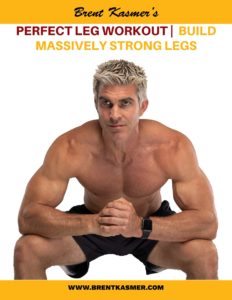December 6, 2020
What’s up my fitness family!
Today I’m gonna show you the 10 best back strength exercises using a barbell.
So, let’s jump right in!
1. Barbell Chest Supported Bent Over Row
I like this!
A lot of my clients are not young bucks anymore so we’re all dealing with injuries and ailments. This gives them the ability to work, but at the same time, not putting their lower lumbar at risk.
Lower lumbar is the lower part of the back, make sure that you don’t get hurt or tweak anything, and you’re able to stay in a stationary position bent over coming up and squeezing and really working those steps, alright?
The steps are right in the middle of your back and you’re squeezing up, squeezing it. I just want to show you guys these exercises, everything’s to whatever your ability is. Squeezing those rhomboids, your scapula, and back down. Good control both ways.
This is a great back strength exercise we’ve started with. This is fantastic for people that have any back injuries, it gives them the ability to work, and get those back stronger without injuring yourself any further.
2. Bent Over Scapula Shrug
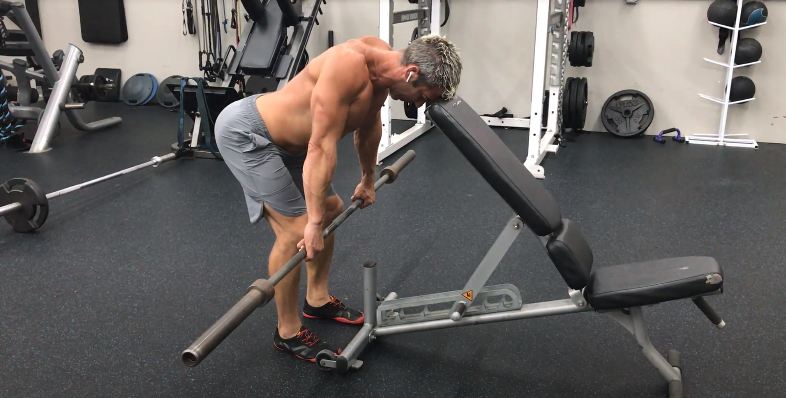
This is a scapula shrug. So this will be a heavier weight, and you’re just going to relax. Let your shoulders relax in the long game, and then you’re going to shrug the barbell up. It’s the same thing working in that middle part of your back, working that scapula and your rhomboids, and then relaxing, okay?
Pulling the barbell up, shrugging it, and relaxing it back out. You can really see how it pulls in and tightens up that middle part of your back. A great way to hit it, you go hard and heavy with this back strength exercises.
So that would be your scapula shrug, alright?
3. Barbell Bent Over Row

Now we’ll go into these barbell variations or your typical ones that most people know about.
So you have your barbell bent-over row, you just pinch forward. Whenever you’re doing these back strength exercises, you have to stay safe, you gotta keep your back tight. The thing that I do when I teach my clients is anytime you get tired, and you feel your stuff starting to relax, that’s when you just want to stand up at the bar or just drop the bar. You want to live to fight another day, you want to work out, you make yourself better, get stronger, make more muscle, but at the same time, you don’t want to get injured because that puts you 10 steps backward.
Pinch that back, nice and tight, keeping it straight, and bent over. This is coming right to your sternum, right between your bellybutton and your chest at this angle. This is a barbell pronated grip and you’re just pulling it upright to that spot I’ve been sharing with you and controlling all the way down. You got to stand nice and tall, then squat and set it down keeping your back nice and tight.
4. Supine Bent Over Row

Supine is the underhand grip, the same thing as bent over supine row.
This one is coming more towards your belly button. You feel those elbows stay nice and tight to you and you drag them back, it’s coming into your belly button.
Just like that, alright?
In the back angle, pinch forward, sticking that block back and out, and pulling that belly button with that supine grip.
5. Barbell Isometric Bent Over Row
The next one is an isometric hole.
You bend over row, pop it up and hold it. Stick and hold it for five or ten seconds then give you that squeeze and then relax. This one you would do for typically like one to three repetitions.
The isometric holds, they’re brutal, but it’s a good way to change up your program though, and just to get something different. It’s a good finishing move.
6. Barbell Inverted Row
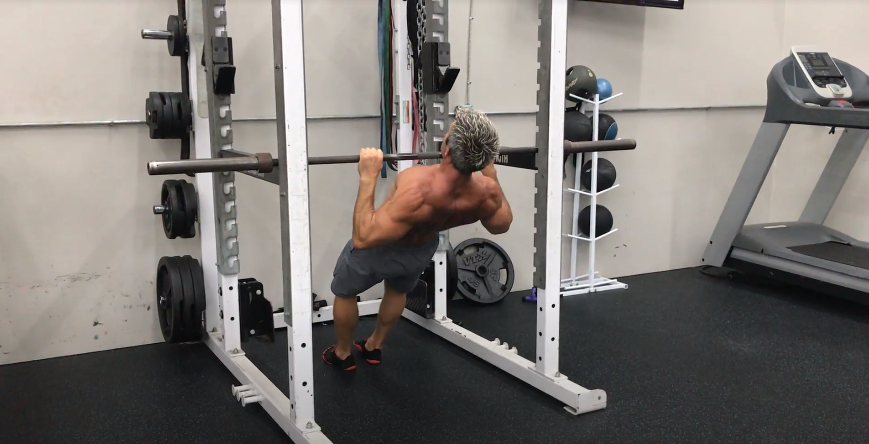
The cool thing about this is you can change the height of these for any level of advanced or beginner, depending on the person.
So the higher it is, the lesser tense it is, easier. And then the further down or the further up you put your feet in, the more invested you are, the harder and more difficult this is.
But this is also another great way to build yourself into pull-ups as well.
This is the barbell inverted row – relaxing those arms, pulling your chest up towards the bar, and relaxing down.
All of these back strength exercises, working your back muscles, your rhomboids, your scapula, your lats, pulling yourself up, exhale as you pull up, and then inhale as you come down.
That’s a lot already!
My back’s getting work, I don’t have any weight on here.
7. Meadow Row

Now, we’re gonna be doing the landmine row. This is the meadow, one of my favorites.
You’re coming to the end of the bar, and what you’re doing is you’re lining up to the middle of your chest and looking into the bar. The bar is a wedge into either the corner of a room or a metal contraption within the gym or garage that can hold the bar at an angle so that way you can lift and pull, and it’s not gonna slip and slide and go everywhere.
Alright, so you’re gonna line up, your foot’s nice and straight on the end of the bar, your back foot is at an angle where the collar is or the first plate, and you’re going to grab the end of the bar with your elbow on your knee.
It hits just a lot better than a dumbbell row when you would normally do a rhomboid pull or cable pull. It’s a great variation, you will feel a difference if you add this into your program, I promise you.
So grabbing at the end of the bard and ripping it up towards your shoulder. Not that you have a choice because that’s where it’s gonna go anyways, the bar’s tied into the wall, you’re just pulling it up, and it’s coming at your shoulder.
The same thing in a different angle, outside foot, lined up outside the bar, inside foot is at a 45-degree angle where the collar or where the first plate is on the bar. Grabbing the end, the end is lining up in the middle of your chest and you’re dragging it up straight towards your shoulder. It’s coming right across your chest, straight up to that shoulder.
If you trap caps, rhomboids, all of the above to the whole middle of your back, the top part of your back, great back strength exercises.
8. T-Bar Row

Then you have your traditional T-bar row.
The same thing, it’s in the landmine position, the bar is in the corner of the room or against that metal area so that way you’re not slipping and sliding. You’re gonna stand about four to six inches behind the collar, you’re straight in the bar, you’re going to squat down, and pick up the bar. You do that to keep your back safe. So you’re back’s coming, you don’t want to leave your back and want to make sure you keep it nice and straight, good control, and tighten it up.
If you feel yourself arching at all when you bend over, either set it down or pick it right back up until you feel like you’re nice and tight again. Pinching your butt back, and you’re gonna pull the bar towards your chest area, elbows are going out hitting that rhomboid area of your back again.
Squat down, setting the bar down, keeping your back nice as long as you drop your butt down to the floor, and setting that bar down.
That’s your T-Bar Row.
Wow, that was number eight already!
9. Single Arm T-Bar Row

Now we’re gonna go to the single-arm t-bar row. Same thing, just like you would line up for a lot more pull.
For that metal row, you’re gonna wind up on the side of the bar, the back of the bar is against the wall, you’re lining up the side of the bar, you’re going to place your outside elbow on your knee, your inside leg goes back, and you’re grabbing right behind that collar again.
This is very similar to the dumbbell bent-over row or a single-arm cable row except for the angle of it. It’s all about different angles, different areas of the back, and pulling it up. You really feel this in your collar a lot, driving at your elbow straight down.
The great thing with this in the landmine position is it forces you to do the right thing.
A lot of beginners start off and they’re trying to do a dumbbell row and they’re curling it kind of, they’re doing a lot of things. This helps force that position so that way it’s done properly.
Learn the technique, let your central nervous system pick up on those cues. That way, when you’re doing those other back strength exercises, you feel more confident, and you’re “Oh, that’s how it’s supposed to hit it.” Alright?
So those are the three exercises with the landmine, having that barbell wedges in the corner..
10. Barbell Straight Arm Pullover

This is one of my favorites, the barbell pullover.
It’s a straight arm pullover, but we’re on a decline bench. Your feet are up on the decline, laying down, holding that bar up, going about a little outside of the shoulders, and I prefer unhooking my thumbs. I’m just going straight arms straight back, really crushing those lats and your serratus anterior. All of these finger muscles in your lats that connect your chest and your heart together, they look really pretty.
Stretching back, good stretch, and pulling over, only going to allow your chest but the reason I like it on the decline is just the amount of range of motion that you get when you’re doing this. It’s just much better than if you’re on a flat on a bench.
So that’s your barbell pullover on the decline.
Those are the 10 best back strength exercises using a barbell.
Hopefully, you guys feel like this is some great information.
I can’t wait to see some of the comments. I love reading all the comments that you guys post. It really helps me come up with not only good quality information to share with you guys, but it keeps me moving and finding out what you guys are looking for out there as well.
I got a lot of experience and just love pouring it into you so that way you’re getting the best out of your workouts and staying safe and not being injured.
So that’s key, positive progression.


